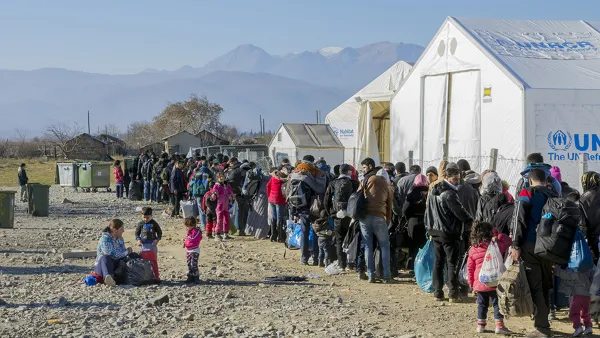To ease the transition from conflict into post-conflict and stability, there is a high need for urban professionals who can artfully balance the demand for security alongside city spaces for healing, argues Mitchell Sutika Sipus.
Today, the world is dotted by low-intensity protracted conflicts, stretching onward by scattered acts of terrorism and insurgency, thus continually threatening civil society and undermining the development of state sponsored institutions. The elongation of war not only drains state resources, but reinforces a cyclical condition of violence, as the population subjected to war must continue to live and die in a constant state of fear and aggression. Unfortunately in these conditions, the triggers of trauma do not go away, making it nearly impossible for local populations to leave behind painful memories and to move forward in their lives.
While contemporary psychology may have individual methods of therapy, tied to the personal history of the victim, there is a clear demand to move forward at an urban scale. While there remains risks, a city consisting of fortified defensive walls and military installations is not a city where one wants to live. Yet at what point do the walls come down? If there is to be a sufficient transition in contemporary warfare from conflict to truly post-conflict, then urban professionals must take it upon themselves to facilitate this change to create infrastructure that meets the immediate demands of security with the long-term demands of healing.
FULL STORY: Demand for Urban Planners to Heal the Trauma of War

Analysis: Cybertruck Fatality Rate Far Exceeds That of Ford Pinto
The Tesla Cybertruck was recalled seven times last year.

National Parks Layoffs Will Cause Communities to Lose Billions
Thousands of essential park workers were laid off this week, just before the busy spring break season.

Retro-silient?: America’s First “Eco-burb,” The Woodlands Turns 50
A master-planned community north of Houston offers lessons on green infrastructure and resilient design, but falls short of its founder’s lofty affordability and walkability goals.

Test News Post 1
This is a summary

Analysis: Cybertruck Fatality Rate Far Exceeds That of Ford Pinto
The Tesla Cybertruck was recalled seven times last year.

Test News Headline 46
Test for the image on the front page.
Urban Design for Planners 1: Software Tools
This six-course series explores essential urban design concepts using open source software and equips planners with the tools they need to participate fully in the urban design process.
Planning for Universal Design
Learn the tools for implementing Universal Design in planning regulations.
EMC Planning Group, Inc.
Planetizen
Planetizen
Mpact (formerly Rail~Volution)
Great Falls Development Authority, Inc.
HUDs Office of Policy Development and Research
NYU Wagner Graduate School of Public Service


























